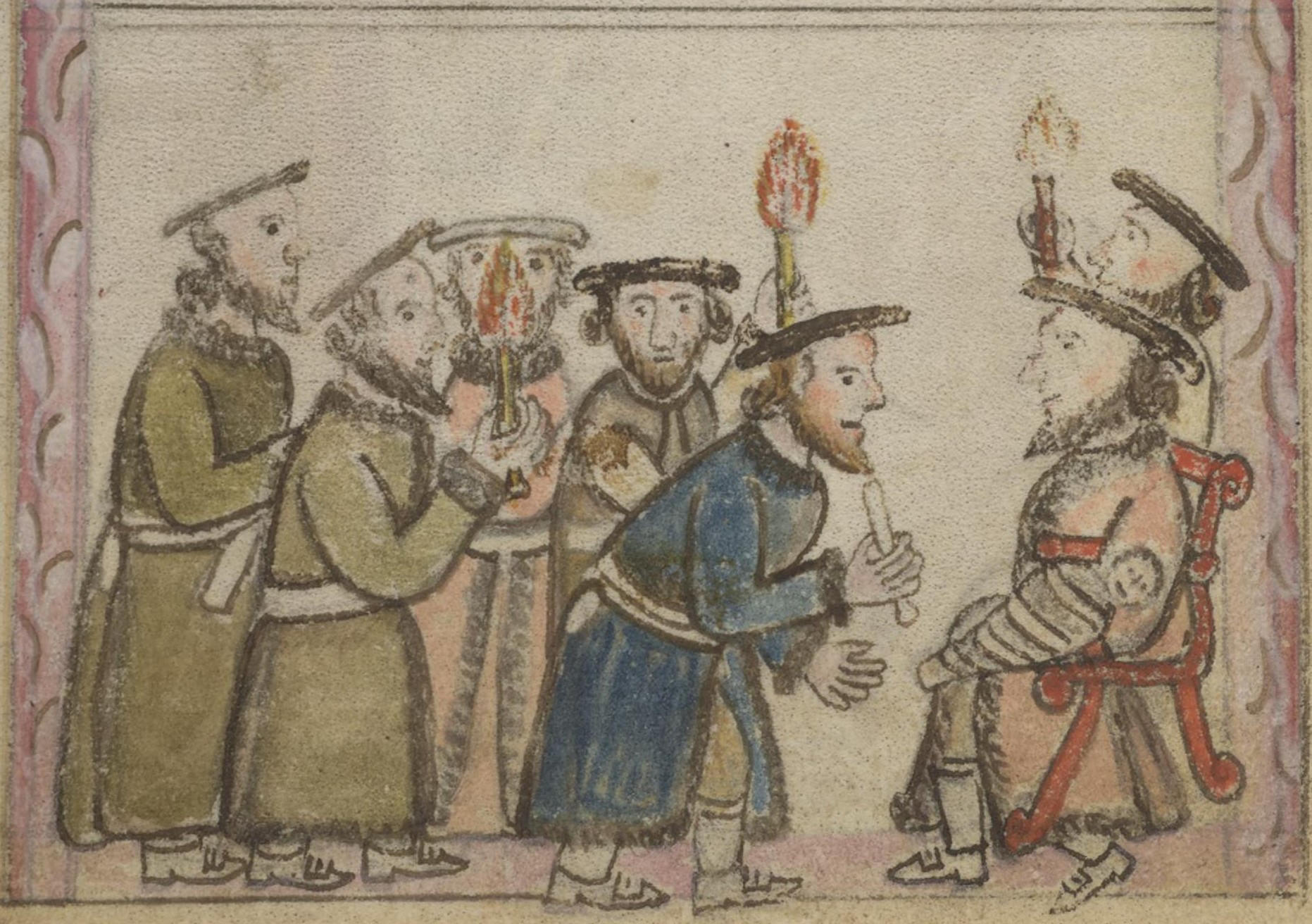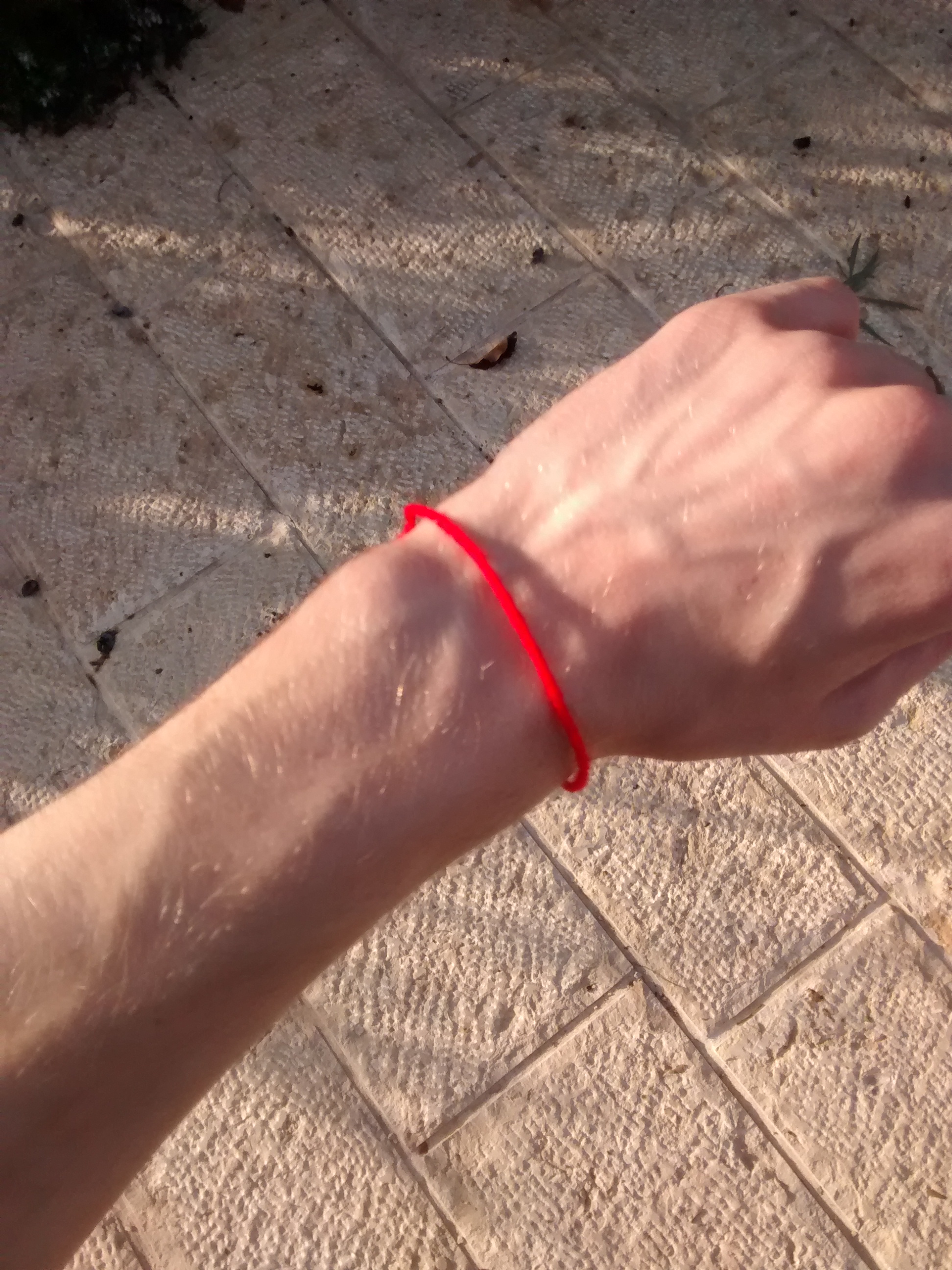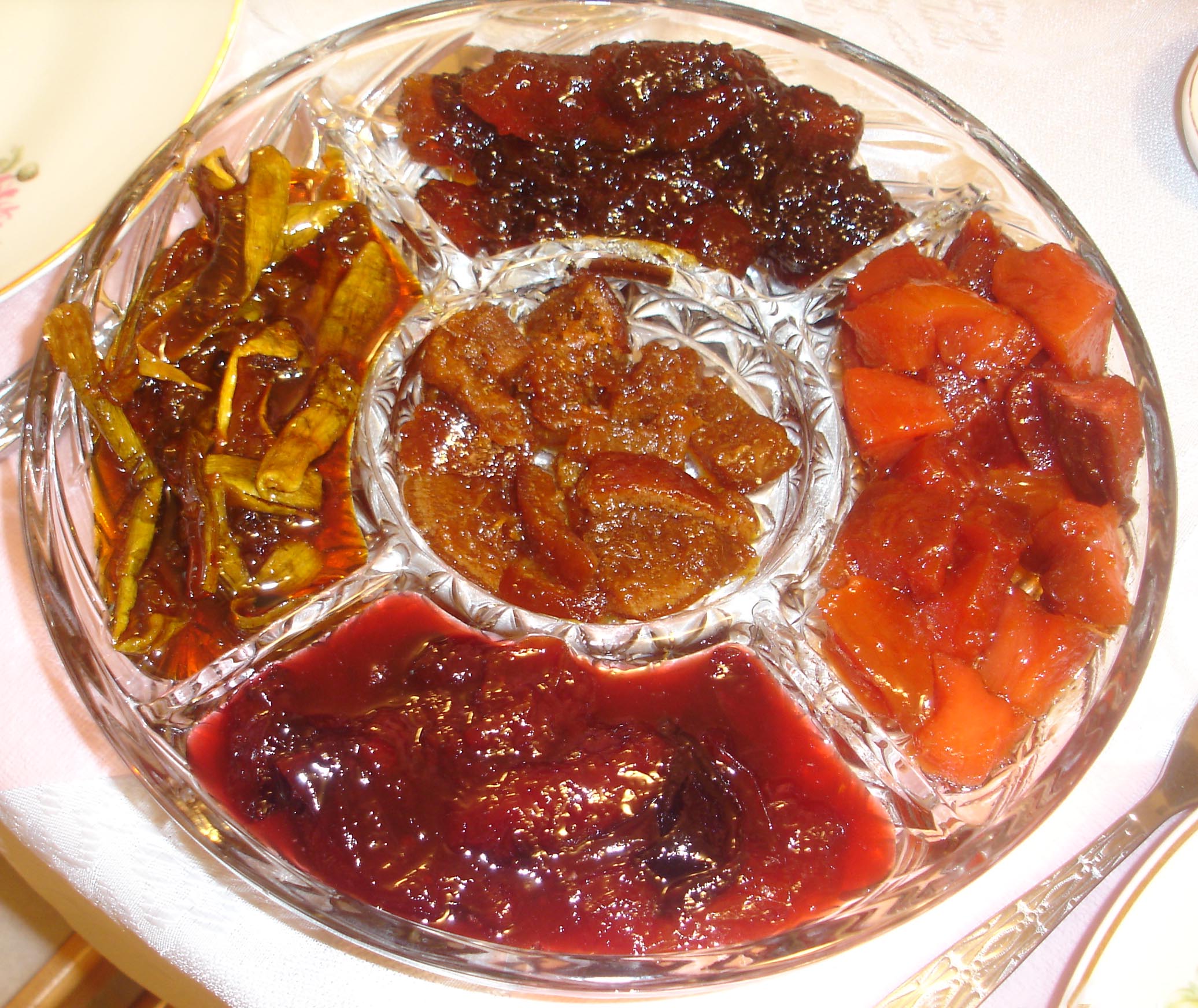|
Segula (Kabbalah)
A segula (, pl. ''səḡulloṯ'') is a protective or benevolent incantation or ritual in Kabbalistic and Talmudic tradition. Etymology In medieval magic, " sigil" () was commonly used to refer to occult signs representing various angels and demons the practitioner might summon. In this context, the term sigil derives from the Latin '' sigillum'' "seal." Maimonides strongly urges against writing sigils on the back of a '' mezuzah'', turning it into an amulet, in Mishneh Torah, "Laws of Tefilin and Mezuzzah", 5:4. ''Segula'' appears in the Hebrew Bible in Exodus 19:5 and Deuteronomy 7:6, where God refers to the Jewish nation as his ''segula'' (treasure). The root of this word, segol, is the name of a Hebrew vowel-point represented by three dots. According to the Chaim ibn Attar, a ''segula'' is "a charm that supersedes logic". List of ''segulot'' Following is a list of popular or well-known segulot. Fertility and childbirth *Distributing '' chai rotel'' (about 54 liter ... [...More Info...] [...Related Items...] OR: [Wikipedia] [Google] [Baidu] |
Talisman
A talisman is any object ascribed with religious or magical powers intended to protect, heal, or harm individuals for whom they are made. Talismans are often portable objects carried on someone in a variety of ways, but can also be installed permanently in architecture. Talismans are closely linked with amulets, fulfilling many of the same roles, but a key difference is in their functions. An amulet protects a person or possession against evil forces while a talisman provides good fortune. Talismans have been used in many civilizations throughout history, with connections to astrological, scientific, and religious practices; but the theory around preparation and use has changed in some cultures with more recent, new age, talismanic theory. Talismans are used for a wide array of functions, such as: the personal protection of the wearer, loved ones or belongings, aiding in fertility, and helping crop production. Etymology The word ''talisman'' comes from French , via Arabic (, p ... [...More Info...] [...Related Items...] OR: [Wikipedia] [Google] [Baidu] |
Brit Milah
The ''brit milah'' (, , ; "Covenant (religion), covenant of circumcision") or ''bris'' (, ) is Religion and circumcision, the ceremony of circumcision in Judaism and Samaritanism, during which the foreskin is surgically removed. According to the Book of Genesis, God commanded the Patriarchs (Bible), biblical patriarch Abraham to be circumcised, an act to be followed by his descendants on the eighth day of life, symbolizing Covenant of the pieces, the covenant between God in Judaism, God and the Jewish people. Today, it is generally performed by a mohel on the eighth day after the infant's birth and is followed by a celebratory meal known as ''seudat mitzvah''. ''Brit Milah'' is considered among the 613 commandments, most important and central commandments in Judaism, and the rite has played a central role in Jewish history, the formation and history of Jewish culture, Jewish civilization. The Talmud, when discussing the importance of ''brit milah'', considers it equal to all ot ... [...More Info...] [...Related Items...] OR: [Wikipedia] [Google] [Baidu] |
Tzedakah
''Tzedakah'' ( ''ṣədāqā'', ) is a Hebrew word meaning "righteousness", but commonly used to signify ''charity''. This concept of "charity" differs from the modern Western understanding of "charity". The latter is typically understood as a spontaneous act of goodwill and a marker of generosity; ''tzedakah'' is an ethical obligation, and it is not properly "charity", like in Christendom, but a way to empower poor people to support themselves, helping them in developing their talents and skills. ''Tzedakah'' (Tzedaka) refers to the religious obligation to do what is right and just, which Judaism emphasizes as an important part of living a spiritual life. Unlike voluntary philanthropy, ''tzedakah'' is seen as a religious obligation that must be performed regardless of one's financial standing, and so is mandatory even for those of limited financial means. ''Tzedakah'' is considered to be one of the three main acts that can positively influence an unfavorable heavenly decree ... [...More Info...] [...Related Items...] OR: [Wikipedia] [Google] [Baidu] |
The Jewish Press
''The Jewish Press'' is an American weekly newspaper based in Brooklyn, New York City. It serves the Modern Orthodox Jewish community. History The ''Jewish Press'' was co-founded in 1960 by Albert Klass and his brother Sholom Klass. The Klass brothers had previously co-published the ''Brooklyn Daily'' and ''Brooklyn Weekly'' newspapers in the 1940s. In 1960s, a group of leading rabbis approached the Klass brothers to publish a weekly English-language newspaper for Jews who were not fluent in Yiddish. This became ''The Jewish Press''. In March 2014, the newspaper fired editor Yori Yanover after he wrote an op-ed titled "50 Thousand Haredim March So Only Other Jews Die in War." The piece was in reference to a Haredi Jewish prayer rally in Manhattan protesting the draft of yeshiva students to the Israel Defence Forces. Shlomo Greenwald, grandson of Shlomo Klass, has been the newspaper's top editor since May 2021. Editorial The tabloid-style newspaper features distinctive b ... [...More Info...] [...Related Items...] OR: [Wikipedia] [Google] [Baidu] |
Rachel's Tomb
Rachel's Tomb ( ''Qǝbūrat Rāḥēl''; Modern ''Qever Raḥel;'' ''Qabr Rāḥīl'') is a site revered as the burial place of the Biblical matriarch Rachel. The site is also referred to as the Bilal bin Rabah mosque (). The tomb is held in esteem by Jews, Christians, and Muslims.: “Rather than being content with half a dozen or even a full dozen witnesses, we have tried to compile as many sources as possible. During the Roman and Byzantine era, when Christians dominated there was really not much attention given to Rachel's Tomb in Bethlehem. It was only when the Muslims took control that the shrine became an important site. Yet it was rarely considered a shrine exclusive to one religion. To be sure, most of the witnesses were Christian, yet there were also Jewish and Muslim visitors to the tomb. Equally important, the Christian witnesses call attention to the devotion shown to the shrine throughout much of this period by local Muslims and then later also by Jews. As far as ... [...More Info...] [...Related Items...] OR: [Wikipedia] [Google] [Baidu] |
Red String (Kabbalah)
Wearing a thin scarlet or a crimson string (Hebrew: חוט השני, ''khutt hashani'') as a type of talisman is a Jewish folk custom which is practiced as a way to ward off misfortune which is brought about by the "evil eye" (Hebrew: עין הרע). The tradition is popularly thought to be associated with Kabbalah and religious forms of Judaism. The red string itself is usually made from thin scarlet wool thread. It is worn as a bracelet or band on the wrist of the wearer. The red string was worn in many cultures and not founded solely in Jewish culture. Hinduism and Chinese culture has also worn this red string or bracelet for luck, love and to ward off evil. Biblical history A scarlet thread, tied about the wrist, is mentioned in Genesis 38. Tamar becomes pregnant by her father-in-law, Judah, and gives birth to twin boys. The following verses about this event are taken from the King James Bible: As early as Rabbi Shmuel ben Hafni Gaon, Jewish commentators noted that the ... [...More Info...] [...Related Items...] OR: [Wikipedia] [Google] [Baidu] |
Breech Birth
A breech birth is when a baby is born bottom first instead of Cephalic presentation, head first, as is normal. Around 3–5% of pregnant women at term (37–40 weeks pregnant) have a breech baby. Due to their higher than average rate of possible complications for the baby, breech births are generally considered higher risk. Breech births also occur in many other mammals such as dogs and horses, see veterinary obstetrics. Most babies in the breech position are delivered via caesarean section because it is seen as safer than being Vaginal birth, born vaginally. Doctors and Midwife, midwives in the developing world often lack many of the skills required to safely assist women giving birth to a breech baby vaginally. Also, delivering all breech babies by caesarean section in developing countries is difficult to implement as there are not always resources available to provide this service. Cause With regard to the fetal presentation during pregnancy, three periods have been distingu ... [...More Info...] [...Related Items...] OR: [Wikipedia] [Google] [Baidu] |
Monastery Of Saint John In The Wilderness
The Monastery of Saint John in the Wilderness is a Franciscan Catholic monastery built next to a spring on a wooded slope just north of Even Sapir, Israel, and across the valley from Sataf. It is located a short distance from Ein Karem, the traditional birthplace of Saint John the Baptist, and south of Jerusalem. It is also known as Saint John in the Desert or the Desert of Saint John. The convent is the property of the Franciscan Custody of the Holy Land. Significance The monastery commemorates the "wilderness" in which St. John the Baptist lived as an orphaned child and throughout the years which prepared him for public ministry. According to tradition, John was born some 3 km away in Ein Karem, and Luke tells us that John "grew and became strong in spirit; and he lived in the desert until he appeared publicly to Israel". Description The monastery has a church and is built next to the grotto in which St John is said to have lived, which now functions as a chapel. The monas ... [...More Info...] [...Related Items...] OR: [Wikipedia] [Google] [Baidu] |
Sataf
Sataf (Arabic: صطاف, Hebrew: סטף) was a Palestinian village in the Jerusalem Subdistrict depopulated during the 1948 Arab–Israeli War. It was located 10 km west of Jerusalem, with Sorek Valley (Arabic: Wadi as-Sarar) bordering to the east. Two springs, Ein Sataf and Ein Bikura flow from the site into the riverbed below. A monastery located across the valley from Sataf, i.e. south of Wadi as-Sarar, known by local Arabs as Ein el-Habis (the "Spring of the Hermitage"), is officially called Monastery of Saint John in the Wilderness. Today it is a tourist site showcasing ancient agricultural techniques used in the Jerusalem Mountains. History Chalcolithic period Remains of a 4,000 BCE Chalcolithic village were discovered at the site. The related traces of agricultural activities number among the oldest in the region. Byzantine period Most ancient remains date to the Byzantine period. Mamluk period The first written mention of the site is from the Mamluk era. Ott ... [...More Info...] [...Related Items...] OR: [Wikipedia] [Google] [Baidu] |
Preserves
Fruit preserves are preparations of fruits whose main preserving agent is sugar and sometimes acid, often stored in glass jars and used as a condiment or spread. There are many varieties of fruit preserves globally, distinguished by the method of preparation, type of fruit used, and its place in a meal. Sweet fruit preserves such as jams, jellies, and marmalades are often eaten at breakfast with bread or as an ingredient of a pastry or dessert, whereas more savory and acidic preserves made from " vegetable fruits" such as tomato, squash or zucchini, are eaten alongside savory foods such as cheese, cold meats, and curries. Techniques There are several techniques of making jam, with or without added water. One factor depends on the natural pectin content of the ingredients. When making jam with low-pectin fruits like strawberries, high-pectin fruit like orange can be added, or additional pectin in the form of pectin powder, citric acid or citrus peels. Often the fruit will b ... [...More Info...] [...Related Items...] OR: [Wikipedia] [Google] [Baidu] |
Etrog
Etrog (, plural: ; Ashkenazi Hebrew: , plural: ) is the yellow citron (''Citrus medica'') used by Jews during the weeklong holiday of Sukkot as one of the four species. Together with the ''lulav'', ''hadass'', and ''Aravah (Sukkot), aravah'', the ''etrog'' is taken in hand and held or waved during specific portions of the holiday prayers. Special care is often given to selecting an ''etrog'' for the performance of the Sukkot holiday rituals. Etymology The Romanization of Hebrew, romanization of the Hebrew as ''etrog'' from Sephardi Hebrew is widely used. The Ashkenazi Hebrew pronunciation is ''esrog'' or ''esrig''. It has been transliterated as ''etrog'' or ''ethrog'' in scholarly works. The Hebrew word is thought to derive from the Persian language, Persian name for the fruit, ''wādrang'', which first appears in the Vendidad. Related words are () and . It has also made its way into Arabic as notably in a hadith collected in the ''Sahih Muslim''. A rare Aramaic form, ''eṯrun ... [...More Info...] [...Related Items...] OR: [Wikipedia] [Google] [Baidu] |








